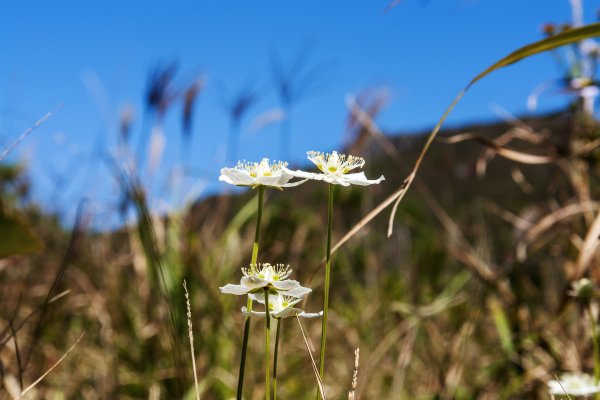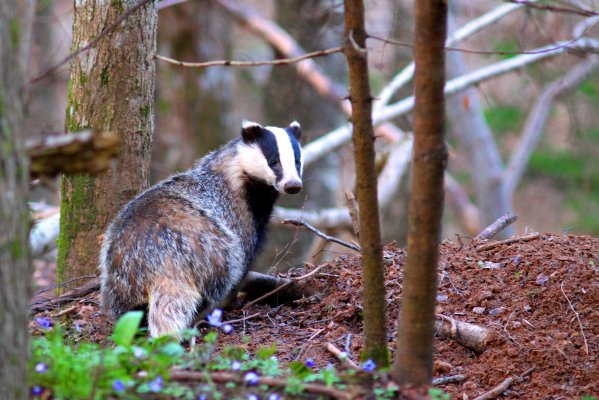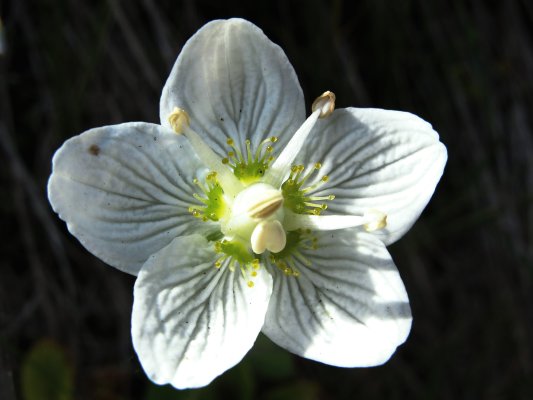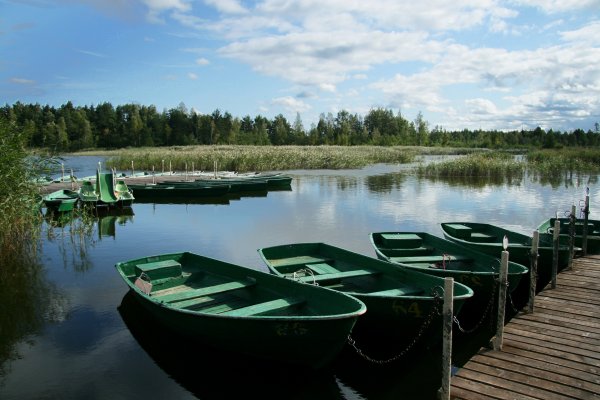TOP 5 nominations of the year
Attēls: flickr
At the beginning of the new year, associations and organisations representing Latvian natural scientists named the natural symbols of this year. Hereby we would like to offer you to get acquainted with the animal, bird, habitat, moss and plant of the year, which are be found, heard and seen in the areas managed by JSC "Latvian State Forests" (LVM).
Animal of the year - the badger
The badger (Meles meles) - one of the largest carnivora order mustelids living in Latvia - has been named the animal of this year. It is not mentioned in the lists of protected species. Despite the fact that they are not often to be seen in daylight, there are in fact almost 14 thousand badgers in Latvia.
The badger is an easily recognisable animal. Its coat is made of bristles, the undercoat is rusty or grey, and its belly is darker than the back. Its specific black and white head colouration warns other animals not to come too close.
The badger is an omnivore, just like the bear, and spends the winter in sleep, waking up only from time to time. The badger's claws are sharp and strong, they serve good for digging burrows, and for scratching the ground to find food - insects, earthworms, caterpillars. In doing so, in the badger's way there happen to be some tree roots, and its strong teeth are very helpful to bite the roots off the way. In spring, after its winter sleep, the badger also eats dead animals or carrions. The badger has well-developed sense of smell; in turn, its hearing and vision are poor.
The animal creates its home or system of burrows in one particular place, and a large family gathers around it - there may be up to ten animals of different generations living in one place. Owing to their unique branching and ventilation systems, the badger's burrows are a true architectural masterpiece. Burrows last for several decades. The most common badger's neighbours are the raccoon dog, fox; also the lynx likes to settle down in badger's uninhabited lodgings. The badger marks its territory, by "fragnancing" it.
When coming out of the burrow, the badger first sticks out its head, takes a look around, sniffs the air, and only then starts crawling out. Security check can take up to 10-15 minutes. The badger knows - there might be a wolf waiting for it by the burrow.
Bird of the year - the great spotted woodpecker
The Latvian Ornithological Society has been selecting the bird of the year already since 1996; and this year the winner is the great spotted woodpecker (Dendrocopos major).
"Woodpeckers are the main creators of cavities in the forest. It is interesting that the majority of the woodpecker species only once nest in their bored-out cavity; already the next year they make a new cavity. And here in the abandoned cavity, straight away the cavity-nesters like titmice and flycatchers settle down to make their home. Also the wood pigeon, which is a specially protected species, as well as the owl, are among those who like making their nests in woodpecker’s cavities," says Uģis Bergmanis, LVM senior environmental expert. Besides, the diligent woodpecker extinguishes forest pests such as aphids, caterpillars, beetles and many others.
Since they feed not only on insects, but also on conifer seeds, during the winter season woodpeckers can often be seen in coniferous forests.
Nine species of piciformes may be found in Latvia: wryneck, grey-headed woodpecker, green woodpecker, black woodpecker, great spotted woodpecker, middle spotted woodpecker, white-backed woodpecker, small woodpecker and three-toed woodpecker.
Moss of the year - the ostrich-plume feathermoss
Any mushroom-picker or berry-picker will have noticed that there are many different kinds of moss growing in the Latvian state forests. This year, for the very first time the moss of the year has been selected; and it is the ostrich-plume feathermoss (Ptilium iliac-castrense). The aim of this nomination is to draw attention to mosses as one of the oldest forms of life on the earth, which not only serves as home to many animals, but also ensures preservation of natural diversity.
"The ostrich-plume feathermoss is common throughout the entire area managed by LVM - most often it grows on the ground in coniferous forests, and rarely in mixed-wood forests, provided that the growing conditions are medium to moderately moist. Sometimes it also grows on severely decomposed woody debris. The species has a wide ecological amplitude, it successfully copes with less favourable growing conditions, such as lighting changes, temporarily damp conditions," says Ilze Rēriha, LVM environmental expert.
The ostrich-plume feathermoss grows in small areas between different species of moss; therefore to notice it, one must look closely and attentively. Visually it is similar to ostrich plume, and that's how it got its name.
There are more than 500 species of moss in Latvia, and their appearance and growing conditions may be very different. Besides, they have a practical application in human life, since the valuable biologically active substances are used in medical treatment.
Plant of the year - the marsh grass of Parnassus
The plant of the year 2016 is the marsh grass of Parnassus (Parnassia palustris), which blooms from late July to September. The marsh grass of Parnassus is an up to 35 cm high, poisonous caulescent plant with resplendent blossom that grows in naturally wet meadows and fens, also in the areas managed by LVM. Its blossom has beautifully veined petals and special fruitless fan-shaped stamens with drip glands at the ends of the knobs.
LVM environmental expert Diāna Marga: "The marsh grass of Parnassus can be found in naturally wet meadows, fens and spring fens, also in LVM-managed territories. Last year LVM experts found the plant by the Lake Melnezers, in the Veseta Floodplain Mire, in Stikli Marshes, and other moist areas."
The blossom of the marsh grass of Parnassus smells only in warm sunlight. There are drip glands on the blossom which resemble honey drops.
Habitat of the year - reed beds
Reed beds have been named the habitat of the year, the second time when this nomination is put forward. They are important because they serve as a place of residence for a variety of species of birds, fish, amphibians and invertebrates.
Reeds grow in almost all lakes in Latvia, but larger reed beds can be seen in coastal lakes - in the LVM-managed Lake Kaņieris, as well as in Engure, Pape and other lakes.
As the reed grows fast and phases out the surrounding plants, there are lakes, where as a result of overgrowing, the area covered by reeds has been increasing rapidly. In order to prevent emergence of large continuous reed beds and depletion of open water surface, reed beds need to managed - fragmented, forming channels that enlarge the border zone between the open water and reeds. Thus, reed beds have become an important habitat for many bird and fish species that live in the these channels, including protected species such as the bittern, marsh harrier, little crake, bearded reedling and Savi's warbler. Reed beds also play an important role in reduction of run-off caused by agriculture and forestry activities.






